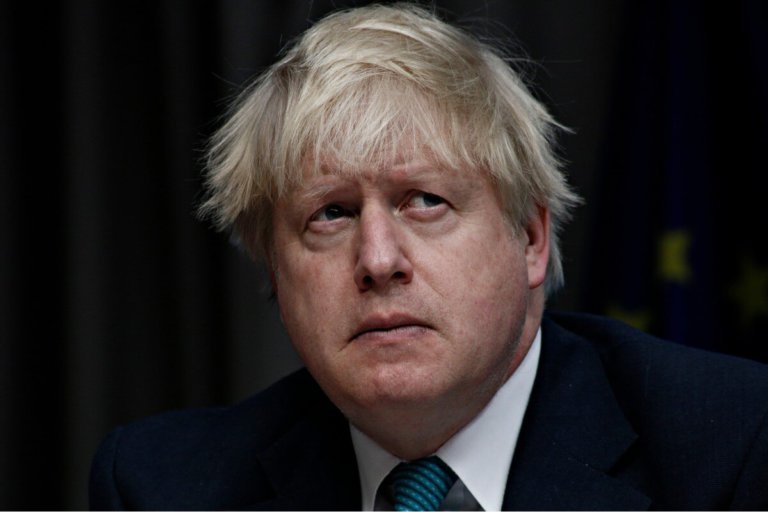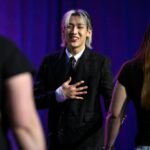
Many words are ascribed to Alexander Boris de Pfeffel Johnson, Britain’s new Conservative party leader and Prime Minister who succeeded Theresa May in the UK’s top government post.
He has a monumental task ahead. His predecessor spent her last three years in office maneuvering the country’s exit from the European Union – Johnson has less than four months to do so before the final deadline set for October 31, 2019.
Supporting this transition, like that of any job candidate, is Johnson’s education and experience. For the latter, Johnson has three decades behind him in a range of fields, from politics to journalism to presenter of a popular history television show, The Dream of Rome. But we know him most as the two-time London Mayor and later, as the foreign secretary under May’s premiership.
In both posts, Johnson was described as “shambolic,” “clownish” and “a buffoon”. Presiding over the 2012 London Olympics and unofficially leading the “Vote Leave” campaign are pivotal points of his recent career, but it is his rumpled appearance, especially his hair, and shenanigans that tend to steal the spotlight.
But analysts say his antics could have been cleverly calculated to capture the public eye. In an age that has seen former reality show host Donald Trump enter the White House, Johnson is said to be one of the same cut, presenting himself as a ‘bumbling idiot’ to counteract his elitist upbringing. Compared to his competitor Jeremy Hunt, Boris is pretty unforgettable, and so, we wonder whether his ultimate victory was all a genius act to get into Number 10 Downing Street…
Our early education is one of the biggest influences that helps form our adult self. Here, we take a look at Johnson’s education journey to see who Britain’s new Prime Minister really is and the potential wider implications for the country:
1. European School, Brussels I

The European School, Brussels I is located in the legally bilingual municipality of Uccle. Source: Shutterstock
Born in New York City to British parents, Johnson’s childhood was global in nature, following his parents’ education (his father at Columbia University and later post-doctoral research at the London School of Economics; his mother at Oxford University) and career, the family shuffled between the UK and US, starting from Columbia University to Oxford University, then the World Bank in Washington DC before moving on to the US state of Connecticut and later, back to London.
At age 10, Boris relocated to Brussels where his father, Stanley Johnson, was made Head of the European Commission’s newly-established Prevention of Pollution Division.
Founded in 1953, European Schools refers to a network of private schools set up in EU member states, providing children with a multilingual and multicultural education at nursery, primary and secondary levels. It offers the European Baccalaureate diploma, a higher education qualifiying certificate awarded to those who complete coursework and exams for a minimum of 10 subjects and have full proficiency in two languages.
The book, Just Boris: The Irresistible Rise of a Political Celebrity, authored by Sonia Purcell, describes “the clever young blond” and his time here:
“Meanwhile, Boris spent two years in Brussels, learning to be a ‘good European’ and rapidly becoming fluent in accent-less French. Although as an adult he has frequently played down his gift for foreign languages – adopting when it suits the classic ‘Brit abroad’ assault on French vowels and syntax – he is virtually bi-lingual and proficient in three more languages.”
2. Ashdown House

Ashdown House, a co-educational prep school in Forest Row, East Sussex, is one of the country’s oldest. Source: Wikimedia Commons
After his mother was hospitalised for a nervous breakdown, Johnson and his siblings were sent to Ashdown House. The preparatory boarding school in East Sussex is credited as the place that “played a large part in creating the Boris we know today”. His recollection of his time there evokes an “unusually emotional” reaction in him.
Corporal punishment could explain why. Hearing “small boys being terrorised and battered” outraged and distressed him, according to media baron Conrad Black, who later employed him at the right-wing newspaper, The Spectator.
It was here that the dishevelled persona was created. As a survival tactic (he was teased for his Turkish roots and being a foreigner from across the Channel) he soon adopted a startling change in character, one possibly inspired by PG Wodehouse’s stories of a 1930s English eccentric who is bumbling but “fantastically well-read”.
He excelled in Greek and Latin, “outclassing” those who have studied the subjects longer than he did. Later, he won a scholarship to Eton College.
3. Eton College
Educating 20 former Prime Ministers, this iconic institution is described as “the nursery of England’s gentlemen” and “the chief nurse of England’s statesmen”. With its list of alumni including Princes William and Harry, Britain’s most famous public boys’ school is also its most notable symbol of elitisim and the British ruling classes. The ‘Curriculum’ page of the school’s website states:
“When a boy leaves Eton, he will have five years’ experience of academic, sporting, dramatic, artistic, musical and, perhaps most importantly, personal growth to look back on, the greater part of the latter having been centred on his house and the friendships he has made there. He will almost certainly go on to university.”
Another Eton Mess in the making pic.twitter.com/YADxLQ5NmG
— Martin Cooper (@struthTruth) July 24, 2019
With current fees at £14,167 per half term – and three terms in a year – entry is inevitably reserved for a select few. Boris joined Eton as a King’s Scholar and went on to become an “all-rounder”, not exactly the smartest among other Scholars, but ahead of non-Scholars.
While Eton is attributed to be the grounds where Johnson’s flamboyant persona truly came to be, he attained several academic achievements, too. He became a “formidable debater”, won prizes in English and Classics and became editor of the school newspaper, The Chronicle.
But his many co-curricular activities soon got school administrators complaining about him being late, not turning in work, being disorganised and his doubtful “commitment to the real business of scholarship”.
Despite this, he won a scholarship to read Literae Humaniores, a four-year course in Classics (Latin and Ancient Greek), at Balliol College, Oxford.
4. University of Oxford
“From Oxford University, Mr Johnson had developed his popular persona and learned how to adapt to win – useful lessons.”
How did @BorisJohnson‘s university days 👨🎓 make him fit for the top job? https://t.co/1Ykd3nki9l pic.twitter.com/cUT3PPEvV8
— Sky News (@SkyNews) July 23, 2019
After a gap year teaching English and Latin at the exclusive Geelong Grammar School – Australia’s version of Eton – Johnson entered Oxford in autumn 1983. This was the year when former Oxford graduate Margaret Thatcher was Prime Minister, and Johnson, the undergraduate, joined a “gilded” cohort who would later go on to dominate media and politics.
His contemporaries included former Prime Minister David Cameron, Foreign Secretary Jeremy Hunt (a Magdalen College alum, who studied PPE), BBC political editor Nick Robinson, Clinton press secretary George Stephanopoulos, US pollster Frank Luntz and newly-minted Chancellor of the Duchy of Lancaster, Michael Gove. May, who he succeeded, was also an Oxonian.
He is the fourth Balliol College-educated Prime Minister, following Herbert Asquith, Harold Macmillan and Edward Heath. Balliol also produced literary giants such as Matthew Arnold, Graham Greene and Robert Browning. It is notable that Johnson chose to study Balliol, which, while known for its strong reputation for Classics, is also known as a “haven for bright young Lefties instead of dim hoorays”, an odd pairing given Johnson’s current right-wing tendencies.
Here, Johnson co-edited the university’s satirical magazine, Tributary. He ran and was elected secretary of the Oxford Union in 1984 and President of the Oxford Union in 1986.
His tutors remembered him as “a good egg”, destined for a first. However, he graduated with a 2:1 and a deep-held disappointment for not achieving one.
Liked this? Then you’ll love…
The appeal of UK private schools among the world’s rich – report







